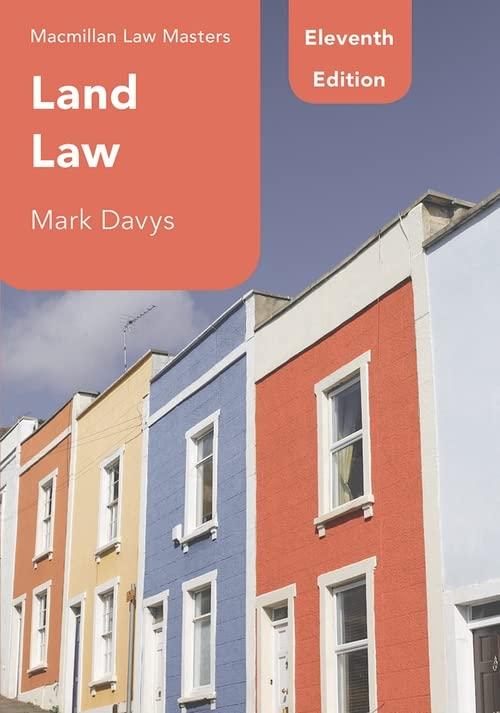Question
Trial Process, Criminal Procedure & the 4th and 5th Amendments COLLAPSE Civil litigation is marked by a series of motions entered with the court by
Trial Process, Criminal Procedure & the 4th and 5th Amendments
COLLAPSE
Civil litigation is marked by a series of motions entered with the court by opposing attorneys on behalf of their clients.If during the pre-trial phase, the settlement has not come about by arbitration or other means, the attorneys meet with the judge for a pre-trial conference to set the schedule for court dates and determine the restrictions or admissibility of evidence, or testimony.Prior to trial, legal teams interview witnesses using skillful, open-ended questions and active listening, documenting their statements in word or graphic form.At this time, the attorney for the plaintiff, or client claiming injury, may enter a motion in limine to limit evidenceRoger Miller & MaryMeinzinger,Paralegal Today: The Legal Team at Workloc. chap. 1, sec. 12-2 (7thed. 2016) (ebook).Jury selection is next, followed by subpoenas issued and delivered to witnesses.The trial process itself begins with opening statements, the plaintiff's side followed by the defendant's side.The order proceeds with the attorney for the plaintiff presenting evidence through exhibits and use of technology, and calling witnesses for direct examination.The attorney for the defense asks questions in cross-examination.The plaintiff's attorney then offers redirect examination, followed by the defense's recross-examination.Idat 12-4c.Defense attorneys make motion for a directed verdict, claiming insufficient evidence.If granted, the case is dismissed.If not dismissed, the defense offers contrary evidence to rebut the plaintiff's presented case. Finally, closing arguments ensue. Defense attorneys may also file a motion for judgment notwithstanding the verdict or motion for a new trial.Idat 12-5a.
Criminal trials differ from civil trials in that the burden of proof is beyond a reasonable doubt, distinct from the preponderance of the evidence in civil trials.Idat 13-1a.Criminal trials must also end with a unanimous vote of acquittal, or guilt, or are considered "hung trials".Idat 13-9d.
The 4thamendment protects people against unlawful searches and seizures, requiring probably cause to shown before obtaining a warrant to search or arrest someone.The 5thamendment ensures a person is not denied "life, liberty, or the property without due process of law". The 5thamendment also prevents someone from being tried twice for the same crime or being forced to testify against themselves or give incriminating evidence.Idat13-6ab.
Police officers arrest a suspect of crime and books them at the police station for initial questioning and to read them their Miranda rights.Idat 13-7a.The defendant may make one phone call and shortly appears before the magistrate to be read their charges and told the stipulation for bail bond. A preliminary hearing is chosen, either before a grand jury or the judge and prosecution and defense attorneys.The purpose is to determine the sufficiency of evidence necessary to bring the criminal to trial. If yes, a grand jury will issue and indictment, or a prosecutor will issue an information, formal charge). At a later date, the alleged criminal is brought before the court, told their charges, and asked to enter a plea of guilty, not guilty, or nolo contender.Idat 13-8e.Attorneys for both sides may work to lower the charges through a plea bargain, leading either to a guilty plea with sentencing or proceeding with the trial.Idat 13-7.
Finally, torts, or wrongs against a particular member of society, can be intentional or negligent.Intentional torts such as assault, battery, defamation, false imprisonment, invasion of the right to privacy, appropriation, fraudulent misrepresentation, intentional infliction of emotional distress must show intent to cause a particular consequence against a person, regardless of the motive to harm.Business torts include wrongful interference with a contractual relationship, perhaps by a competitor, and wrongful interference with a business relationship, perhaps by a company seeking a greater market share.Idat 14-2.
Torts of negligence include when a party has failed to perform a reasonable duty of care that applies to individual persons, businesses, and professionals alike.Idat 14-3a.Strict liability refers to an area of tort law that recognizes a business is liable, particularly in manufacturing, for damages rather than an injured party.This tort stands in place when all reasonable care has been taken, but the risk of injury still remains.Idat 14-5.
i have to offer a more substantive analysis of the concepts and assessment to this reply. how may I go about doing that
Step by Step Solution
There are 3 Steps involved in it
Step: 1

Get Instant Access to Expert-Tailored Solutions
See step-by-step solutions with expert insights and AI powered tools for academic success
Step: 2

Step: 3

Ace Your Homework with AI
Get the answers you need in no time with our AI-driven, step-by-step assistance
Get Started


